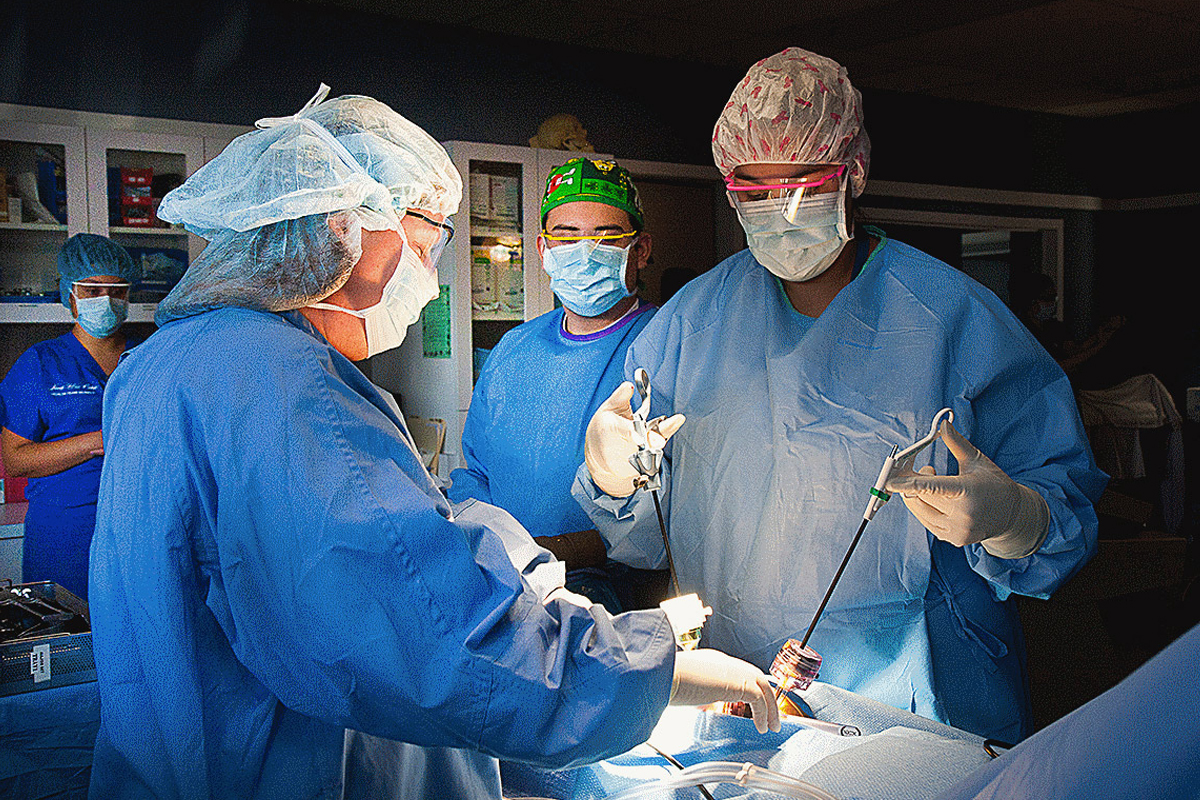Accredited surgical tech programs near me with clinical rotations offer a fantastic pathway to a rewarding career. Finding the right program involves careful consideration of factors like location, program length, tuition, and, crucially, the quality of clinical rotations. This guide helps you navigate the process, comparing different programs to find the perfect fit for your goals and aspirations. We’ll explore everything from admission requirements and curriculum details to career prospects and support services available to students.
Understanding the nuances of each program is key. We’ll delve into the differences between hospital-based and community college programs, examine the types of surgical specialties you’ll encounter during rotations, and highlight the vital role of hands-on training in your education. By the end, you’ll have a clearer picture of what to expect and how to make an informed decision about your future.
Finding Accredited Surgical Technology Programs
Locating an accredited surgical technology program involves researching institutions within your desired geographical area and verifying their accreditation status. This process ensures you receive high-quality education meeting industry standards.
Finding the right accredited surgical tech programs near me with clinical rotations is key to a successful career. To start your search, check out the available programs – a good place to begin is by looking at options listed on this site: surgical tech programs near me. Remember, hands-on experience from those clinical rotations is super important, so make sure any program you choose offers them.
This will help you land that dream job after graduation!
Identifying Accredited Programs within a 50-Mile Radius
Start by using online search engines and professional organizations’ websites (like the Association of Surgical Technologists) to identify programs. Filter your search by location (using a 50-mile radius from your zip code) and accreditation status. Many program websites will clearly state their accrediting body.
Program Comparison Table
The following table compares several hypothetical programs. Remember to replace this with your own research on actual programs near you.
| Program Name | Program Length (Months) | Tuition Cost (Approximate) | Graduation Rate (%) |
|---|---|---|---|
| Example Program A | 12 | $20,000 | 90 |
| Example Program B | 18 | $25,000 | 85 |
| Example Program C | 12 | $18,000 | 92 |
| Example Program D | 15 | $22,000 | 88 |
| Example Program E | 10 | $15,000 | 95 |
Accreditation Bodies
Common accrediting bodies for surgical technology programs include the Commission on Accreditation of Allied Health Education Programs (CAAHEP) and the Accreditation Review Council on Education in Surgical Technology and Surgical Assisting (ARC/STSA). Each program’s website should specify their accrediting body.
Clinical Rotation Aspects
Clinical rotations are an integral part of surgical technology education, providing hands-on experience in a real surgical setting. The structure and experience can vary depending on the program type and affiliated facilities.
Structure of Clinical Rotations
Rotations typically occur in the second half of the program and are structured as a series of placements in various surgical specialties. The duration of each rotation varies, but a typical program might involve 12-16 weeks of clinical experience.
Comparison of Clinical Rotation Experiences
Hospital-based programs often offer rotations within their own facilities, providing consistent access to a wide range of surgical cases. Community college programs might utilize partnerships with multiple hospitals or surgical centers, exposing students to diverse environments and surgical teams.
Surgical Specialties in Rotations
Students commonly rotate through specialties such as general surgery, orthopedics, cardiovascular surgery, neurosurgery, and gynecology. The specific specialties offered will vary based on the program’s affiliations.
Clinical Rotation Tasks and Responsibilities
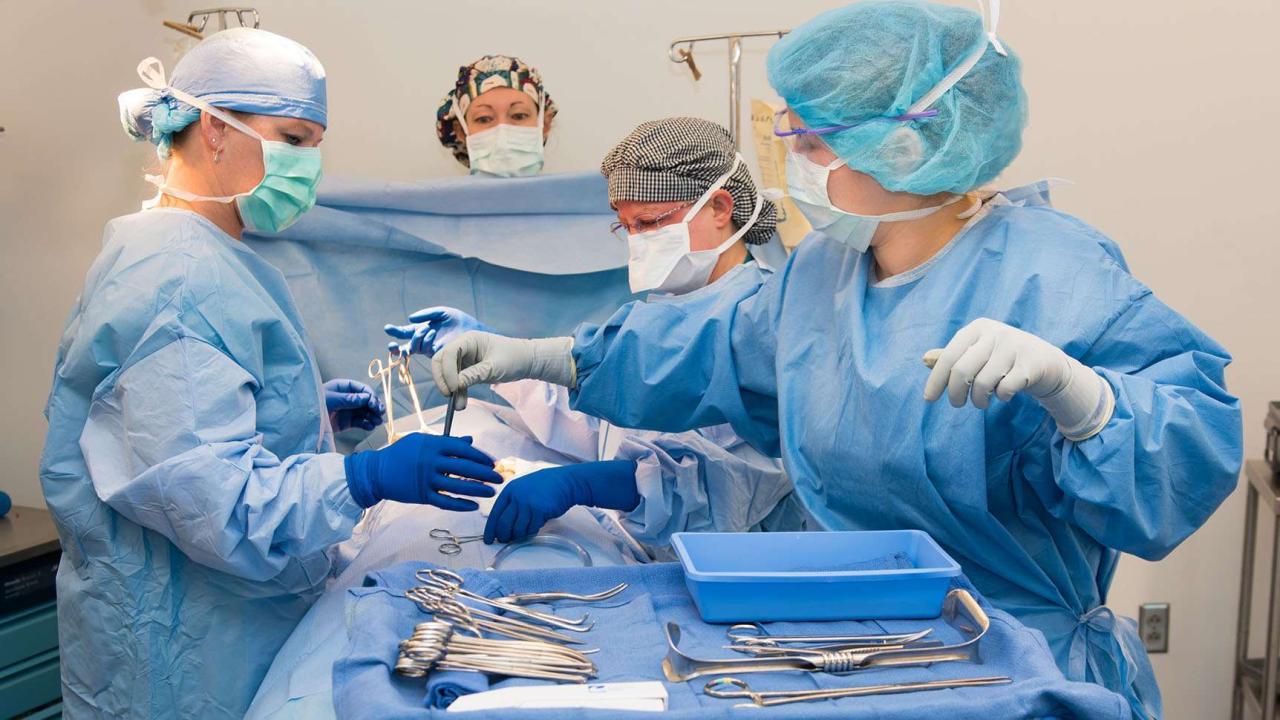
Students assist surgical teams with tasks like preparing the operating room, sterilizing instruments, passing instruments to surgeons, maintaining sterile fields, and assisting with wound closure. They also learn to anticipate the surgeon’s needs and maintain a safe and efficient surgical environment.
Program Admission Requirements
Admission requirements vary between programs. Reviewing these requirements early is crucial for successful application.
Admission Requirements for Three Programs
- Program A: Minimum 2.5 GPA, completion of high school biology and anatomy, and passing score on the TEAS exam.
- Program B: Minimum 3.0 GPA, completion of college-level biology and anatomy, and a criminal background check.
- Program C: Minimum 2.0 GPA, completion of high school biology, and a recommendation letter from a healthcare professional.
Application Processes
Program A uses an online application portal, requiring transcripts, test scores, and essays. Program B requires a paper application, along with references and an interview.
Importance of Prerequisites
Prerequisites ensure students possess the necessary foundational knowledge in science and anatomy, crucial for understanding surgical procedures and maintaining a safe surgical environment. They also demonstrate the applicant’s commitment to the field.
Career Outlook for Graduates
Graduates of accredited surgical technology programs enjoy strong job prospects and competitive salaries.
Job Placement Rates
Accredited programs often boast high job placement rates, often exceeding 90%. This is due to the high demand for skilled surgical technologists and the rigorous training provided by these programs.
Salary Range
The salary range for surgical technologists varies depending on experience, location, and employer. However, a reasonable estimate for entry-level positions is between $45,000 and $60,000 annually.
Career Path Illustration
A surgical technologist might progress to a supervisory role, specializing in a specific surgical area, or pursuing further education to become a surgical assistant.
Student Resources and Support: Accredited Surgical Tech Programs Near Me With Clinical Rotations
Many programs offer comprehensive support services to help students succeed.
Student Support Services
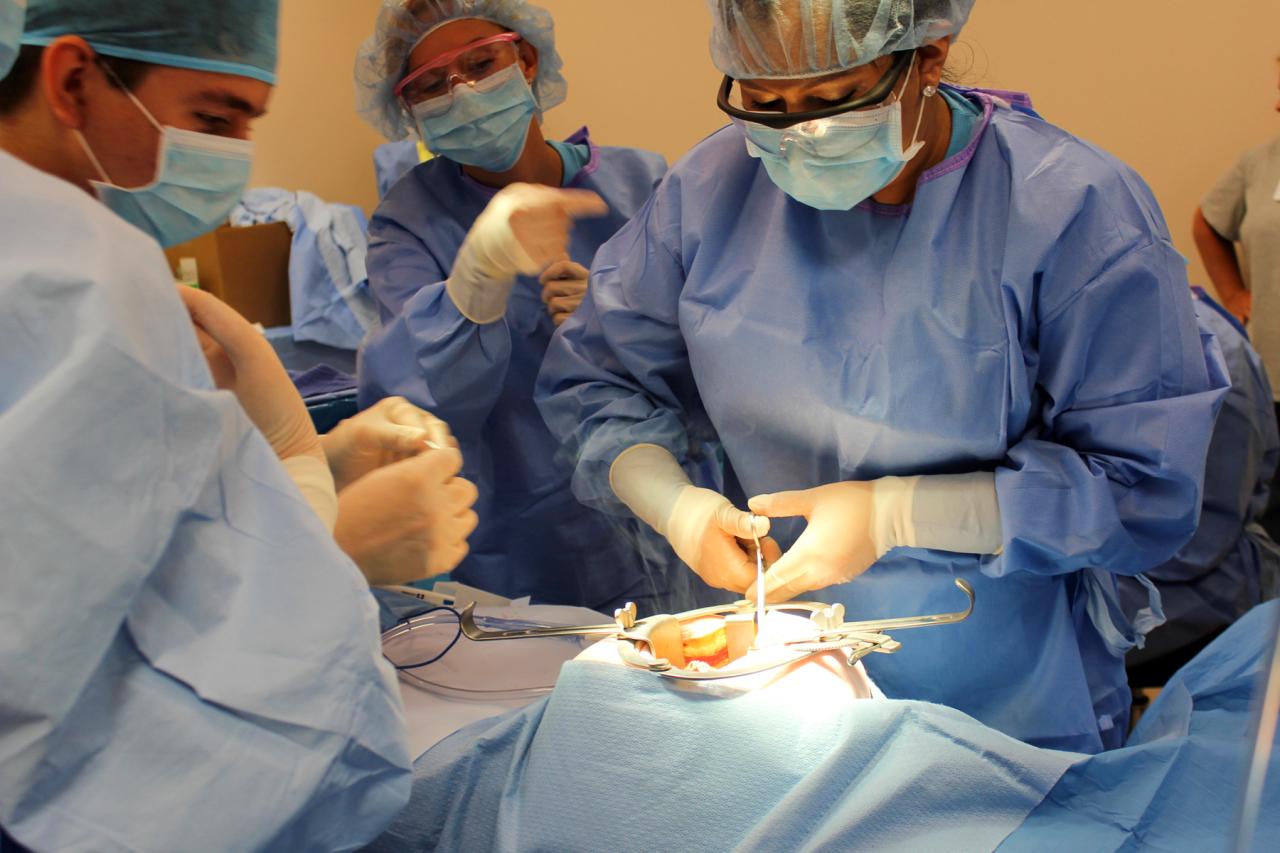
- Program A: Financial aid counseling, career services, and academic tutoring.
- Program B: Access to online learning resources, mentorship program, and student clubs.
- Program C: On-campus tutoring, study groups, and mental health resources.
Resources During Clinical Rotations
- Preceptor guidance and feedback.
- Access to hospital resources and libraries.
- Opportunities for networking with surgical professionals.
Role of Mentorship
Mentorship provides students with personalized guidance, support, and networking opportunities. Mentors can offer valuable insights into the profession and help students navigate challenges during their training.
Program Accreditation and Standards
Accreditation ensures that surgical technology programs meet specific quality standards and prepare graduates for successful careers.
Finding accredited surgical tech programs near you with clinical rotations is key to a successful career. It’s all about hands-on experience, so you’ll want to research thoroughly. Take a quick break from your search to check out this amazing celestial event: Quadrantid meteor shower to light up skies – here’s the best way to see it! Then, get back to researching those surgical tech programs – remember to look for programs with strong hospital affiliations for those crucial clinical rotations.
Importance of Accreditation
Accreditation signifies that a program has undergone a rigorous review process and meets established standards for curriculum, faculty qualifications, facilities, and clinical experiences. It increases the credibility of the program and enhances graduates’ job prospects.
Comparison of Accreditation Bodies
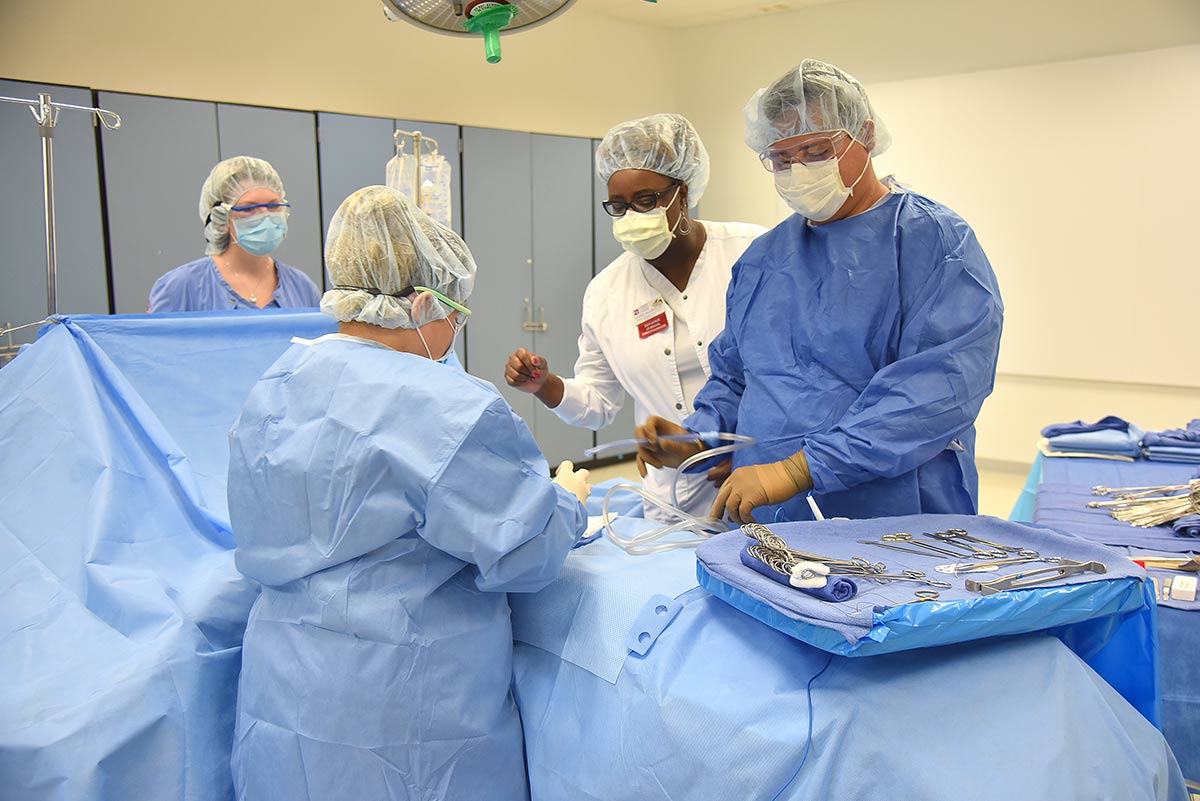
CAAHEP and ARC/STSA both accredit surgical technology programs, but they may have slightly different standards regarding curriculum content, clinical requirements, and faculty qualifications. Both, however, prioritize rigorous training and adherence to safety protocols.
Finding accredited surgical tech programs near you with clinical rotations is key to a successful career. It’s all about hands-on experience, and you’ll need to be prepared for anything, even injuries like the one sustained by Dakota Joshua, as reported here: Canucks: Dakota Joshua leaves game with apparent leg injury. So, while you’re researching programs, remember that surgical techs need to be ready for anything – a good program will prepare you well.
Benefits of Choosing an Accredited Program, Accredited surgical tech programs near me with clinical rotations
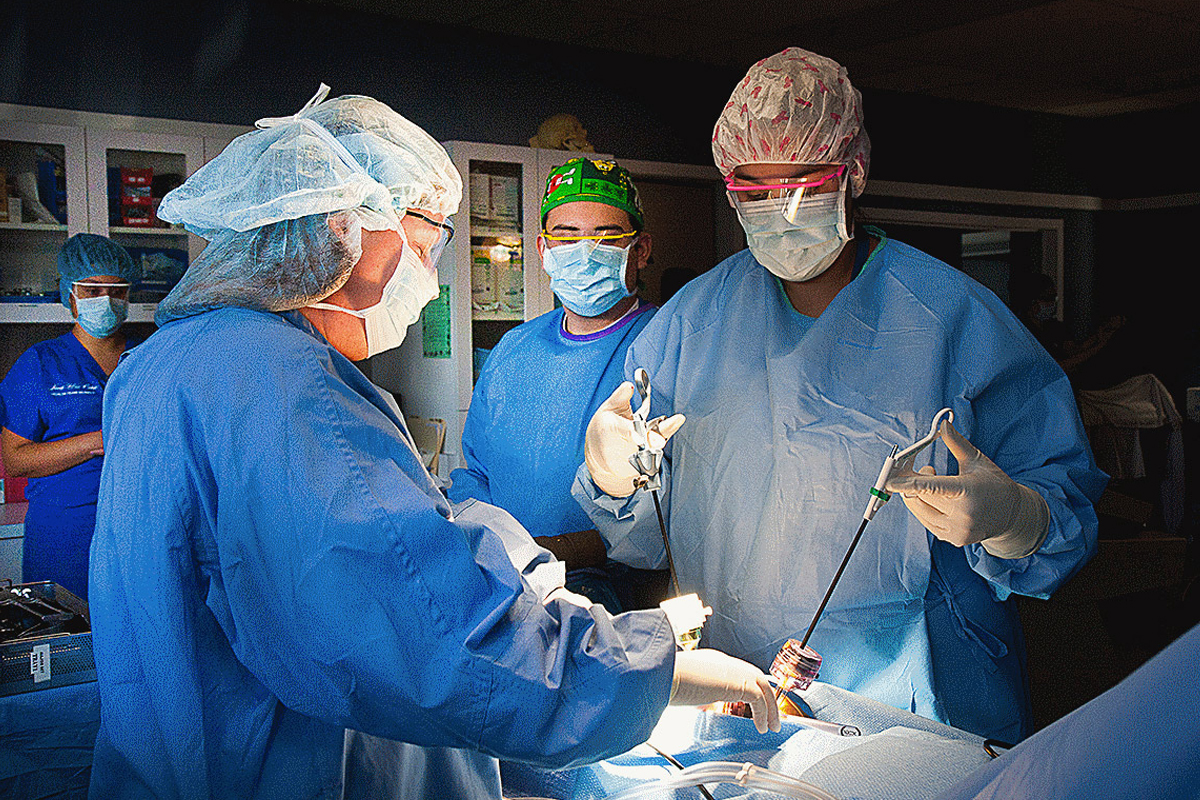
Graduates of accredited programs are more likely to be eligible for certification, have higher job placement rates, and earn competitive salaries. Accreditation assures employers of the program’s quality and the graduate’s competence.
Program Curriculum and Coursework
A typical surgical technology program includes a combination of classroom instruction and hands-on laboratory training.
Sample Curriculum
| Course Name | Semester | Credit Hours | Description |
|---|---|---|---|
| Surgical Anatomy and Physiology | 1 | 4 | Covers the anatomical structures and physiological processes relevant to surgery. |
| Surgical Instrumentation | 1 | 3 | Focuses on the identification, use, and sterilization of surgical instruments. |
| Surgical Procedures | 2 | 4 | Provides detailed knowledge of various surgical procedures and techniques. |
| Sterile Techniques | 1 | 3 | Emphasizes the principles and practices of maintaining a sterile environment. |
Curriculum Comparison
Program A might emphasize advanced surgical techniques, while Program B may focus more on leadership and management skills. These variations reflect the program’s specific goals and resources.
Importance of Hands-on Training
Hands-on training is essential for developing the practical skills and dexterity required for surgical technology. Laboratory exercises and clinical rotations provide opportunities to practice techniques and gain real-world experience.
Conclusion
Launching a career as a surgical technologist requires dedication and the right training. Choosing an accredited program with robust clinical rotations is a crucial first step. By carefully evaluating program features, understanding admission requirements, and considering career prospects, you can confidently select a program that aligns with your ambitions. Remember to utilize available resources and support services to maximize your learning experience and prepare for a successful career in this dynamic field.
Helpful Answers
What is the average length of a surgical technology program?
Program lengths vary, but most accredited programs last between 12 and 18 months.
How much does tuition typically cost?
Tuition costs vary significantly depending on the institution and location. It’s best to check individual program websites for specific pricing.
Are there financial aid options available?
Many programs offer financial aid, including grants, loans, and scholarships. Contact the financial aid office of each program for details.
What kind of job placement assistance is offered?
Many accredited programs provide career services, including job placement assistance, resume building workshops, and networking opportunities.
